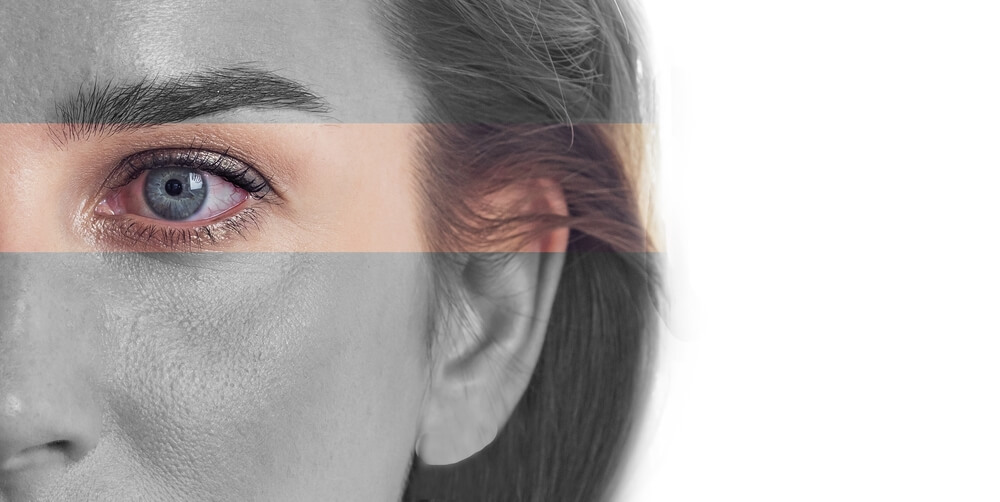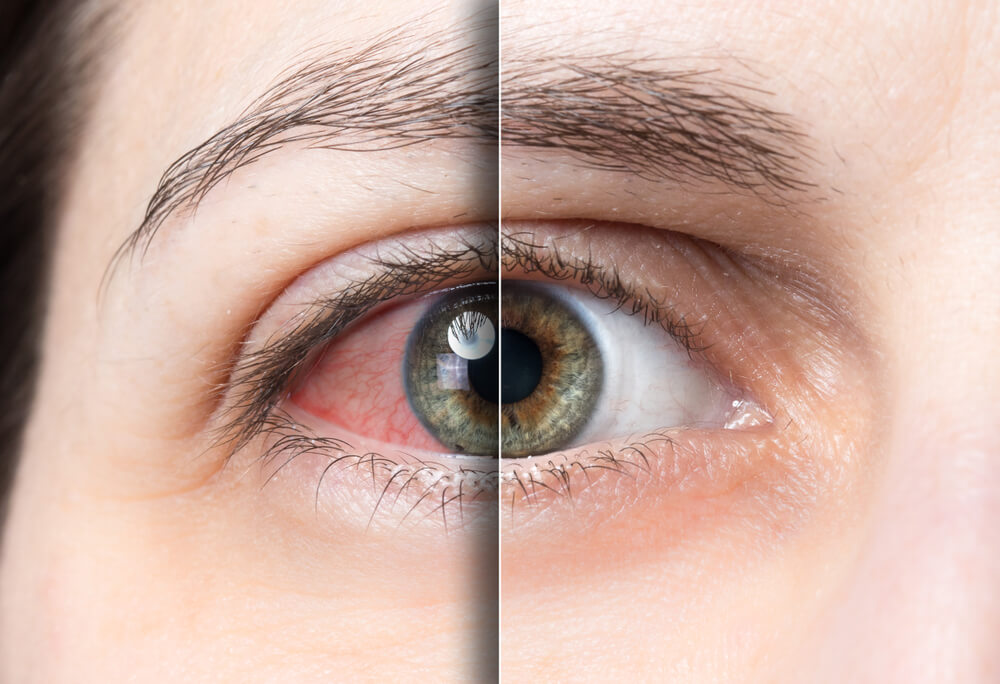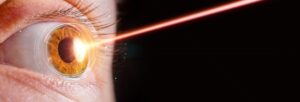
LipiFlow is often referred to as a ground-breaking technology that is able to treat dry eye issues caused by meibomian gland dysfunction, or MGD. Experts use this term to define a group of acquired and congenital disorders that are linked to functional problems in the meibomian glands.
Still, how does the LipiFlow dry eye treatment work? In this article, the expert team at Diamond Vision discusses the benefits of LipiFlow, how it works, and more.
Evaporative Dry Eye: Do You Have It?

The most prevalent type of dry eye syndrome is Evaporative Dry Eye (EDE), an uncomfortable condition resulting from insufficient high-quality tears. Typically, this condition arises due to an obstruction in the meibomian glands, which are minuscule glands located along the edges of your eyelids. These meibomian glands release essential oils that coat the surface of your eyes, preventing the rapid evaporation of your tears.
Optometrists and ophthalmologists will usually diagnose evaporative dry eye through a series of comprehensive evaluations, including:
- Testing the rate of evaporation.
- Monitoring and recording the quality of the patient’s lipid layer.
- Using infrared light imaging to assess the health of the meibomian glands.
- Assess the redness of the eyes.
After these evaluations, the experts will use all the gathered data to accurately determine the root cause of the dry eyes and create a tailored treatment plan that will, in optimal cases, be based on the LipiFlow Thermal Pulsation System.
Naturally, the treatment plan will also include lifestyle and dietary changes, including getting supplements and opting for at-home remedies that may help you find relief from dry eye symptoms.
Still, for the most part, experts will use the LifiFlow treatment as your best option for dry eyes, as it has been clinically demonstrated to efficiently resolve any blockage issues in the meibomian glands. By applying pulsing pressure and directed heat, the body is capable of resuming its expected tear fil oil production.
Preparing for Your Assessment
To help your experts establish a precise diagnosis and to make sure that the LipiFlow treatment will be the best medical route to take, there are several things you can do to ensure you get the best of your assessment:
- Avoid wearing your contacts to the visit – still, you can remove them before the assessment, even at the eye care center.
- Avoid using ointments or eyelid creams a day before the visit.
- Don’t use artificial tear drops a day before the visit.
- Don’t put on any makeup before your appointment.
- Avoid using Restasis a day before the appointment.
- Don’t go swimming in chlorinated water (pools) at least twelve hours before your appointment.
The LipiFlow Treatment: How Does It Work
The LipiFlow treatment for dry eyes usually takes about twelve minutes per eye, and both eyes can be treated simultaneously. On that note, the entire appointment won’t take longer than 45 minutes to one hour.
Before the actual treatment starts, your eye specialist will use mild anesthetic drops on each eye. After that, patients usually undergo debridement, which is a brief procedure that helps eliminate any debris around the eye and the eyelids’ edges. When debridement is over, the Lipiflow treatment can finally begin.
The treatment will look like as described below:
- You will sit relaxed in a reclined chair, and depending on the time that has passed, experts may place another round of numbing drops in your eyes.
- Then, the eye doctor will put a special eye-piece into each eye. At this point, you will be asked to close your eyes gently and keep them that way for the remainder of the session.
- Once the applicators are in their places, the LipiFlow will finally start. During the treatment, you will feel gentle pressure on your eyelids, together with mild warmth.
- The pulsation system has two cycles, each of them lasting for six minutes. The first will be the warming phase, which is followed by sporadic pulsations and constant pressure. When the first cycle is over, the second cycle will also begin with the warming phase. These different phases are necessary for the treatment, as they help remove blockage from the glands.
Usually, patients experience no pain during LipiFlow, and only a small percentage reported mild discomfort during their treatment.
Also, most patients will start to see symptom relief around one to two weeks after treatment. Usually, a month post-treatment, patients will have to attend a follow-up appointment to evaluate their progress.
Is The Relief Permanent?
Unfortunately, evaporative dry eye is a chronic condition, and there is currently no treatment that can offer permanent results. Also, the sustained relief from LipiFlow will depend on several factors, such as:
- Your age
- How long you’ve had problems with evaporative dry eye.
- Your physiology
- Whether you have made positive lifestyle changes that prevent the exacerbation of the condition (for example, you’ve stopped staring at computer screens for extended periods).
- Your general health
On that note, at Diamond Vision, we will strive to create a personalized and comprehensive treatment plan that may also include additional treatment options, such as the BlehpEx procedure.
This innovative in-office procedure also offers long-lasting relief for both dry eye syndrome and blepharitis. Essentially, BlephEx treatment involves thoroughly cleansing the eyelids, effectively removing debris from the eyelash edges and exfoliating the eyelids. This approach promptly alleviates any discomfort associated with dry eye syndrome and blepharitis.
LipiFlow: Clinically Tested

During a clinical study, the majority of participants (76%) who underwent the LipiFlow treatment reported a reduction in their dry eye symptoms within two weeks. The study further revealed that patients treated with the LipiFlow system displayed enhanced oil secretions from their eyelid glands and an extended duration of tear retention on the eye surface before evaporation.
Additionally, the study indicated that there was an average improvement in patients’ self-reported dry eye symptoms. Four weeks after receiving the LipiFlow treatment, a significant 79% of patients reported a noticeable enhancement in their dry eye symptoms.
Don’t Delay Treatment: Reach Out Today
Evaporative Dry Eye represents a progressive, chronic condition that deteriorates over time. This decline occurs because once the meibomian glands cease to function, they cannot be rejuvenated. In the absence of effective treatment, dry eye symptoms will exacerbate and may become severely incapacitating, leading to heightened discomfort, permanent gland dysfunction, cellular damage, and visual impairment. Notably, some individuals with dry eye syndrome may develop an apparent “excessive blinking” in response to the discomfort, which can, unfortunately, be misinterpreted as a neurological disorder, causing anxiety in social settings.
Dry eye syndrome, which initially manifests as a minor disruption in the tear film, can ultimately result in enduring pain and ocular damage. In severe cases, some patients may even report a reduction in discomfort, indicating a potential loss of nerve responsiveness in the eye.
Don’t let dry eyes hold you back any longer. Take the first step toward lasting relief by scheduling a consultation with our experienced specialists today. Rediscover the joy of clear, comfortable vision – your eyes deserve it. Contact Diamond Vision now, and let us help you embark on your journey to brighter, healthier eyes!
Contact Us
If you have more questions about LASIK procedures, get in touch with us.
Related Blogs

Who Should Not Have Laser Eye Surgery
Laser eye surgery, commonly known as LASIK (Laser-Assisted In Situ Keratomileusis), has revolutionized the world of vision correction. It’s a procedure that has enabled millions

LASIK eye surgery: What is LASIK and how does it work?
What Is LASIK? Experts categorize LASIK as a refractive eye surgery in which lasers are used to correct vision problems. LASIK corrects several refractive errors,

Everything You Need To Know About The Lipiflow Treatment
LipiFlow is often referred to as a ground-breaking technology that is able to treat dry eye issues caused by meibomian gland dysfunction, or MGD. Experts
